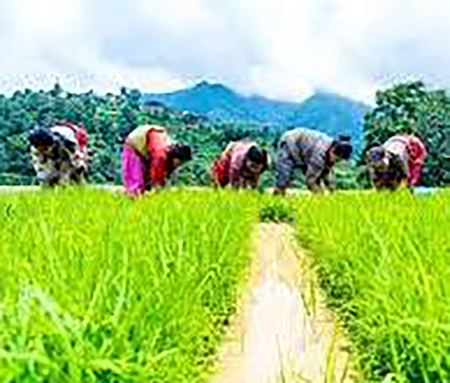Features
HAVE YOU EVER EVEN BEEN TO NEPAL?
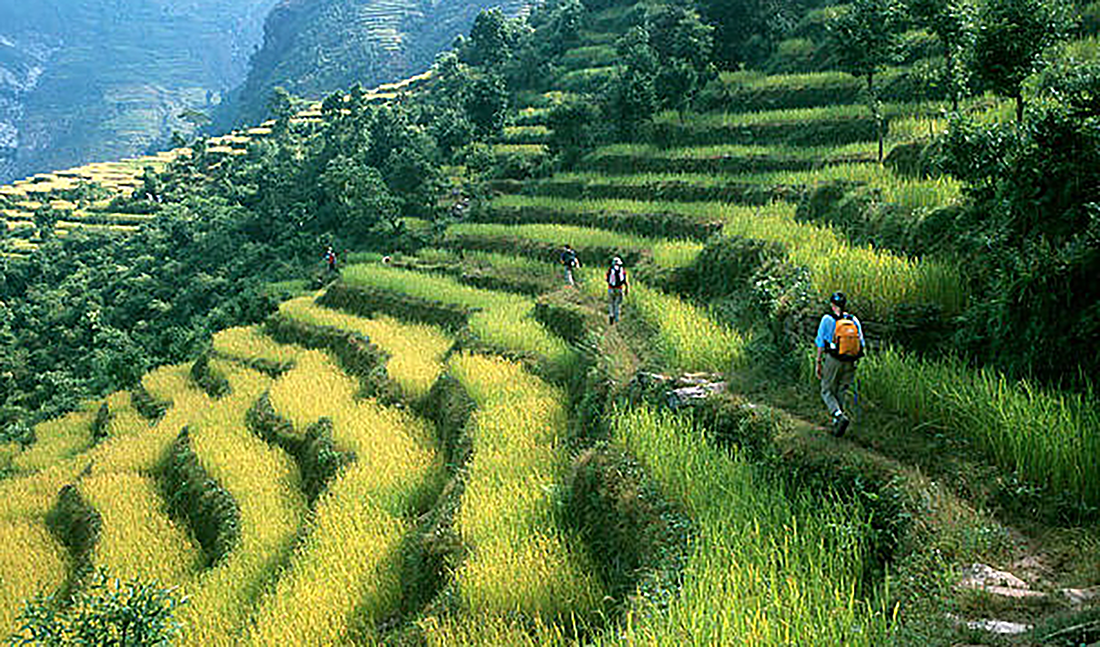
(Excerpted from Fallen Leaves, an anthology of memoirs by LC Arulpragasam)
In 1962, I joined FAO as the Land Tenure Officer in its Regional Office in Bangkok. Within six months I was told that I would be sacked within a week unless I retracted a certain position that I had taken on land reform in Nepal. This is the story.
The Government of Nepal had passed a tenancy reform law in 1962, based on the advice of the Ford Foundation (USA). The law provided for security of tenure along with reduced rents for tenants of agricultural land. Its provisions were roughly in the following terms. Whoever is a tenant of an agricultural land on a specified date (x) will have permanent rights of tenancy. Such a tenant cannot be evicted as long as he pays the landlord a rent of 25 per cent of the crop each year. This was as opposed to the 50 per cent of the crop that was habitually being charged by landlords in Nepal at that time. The law was praised in international circles as a brilliant piece of legislation, because it was short and simple, making any legal challenge difficult.
The legislation was sent to me for comments by my boss, Dr. Erich Jacoby, Chief of the Land Tenure Branch of FAO, Rome. I wrote back to say that while the law was short and direct, there was an implicit problem in its very first words, which said: ‘whoever is a tenant of an agricultural land on date x…’ The law did not specify how it would be decided, whether there was a tenant on the land, and how he would be identified. In practice, every landlord would say that there was no tenant on his/her land – and hence there would be no tenants to benefit from this ‘excellent’ law.
One could theoretically fall back on the land records to ascertain who was a tenant on any particular date. But it was known that Nepal did not have such land records – least of all, a record of tenancy. Some identification of each parcel of land, its extent, its ownership and tenancy would be needed for implementing such reforms – and this was completely lacking in Nepal at that time. This is in contrast to the comprehensive system of land records in British India, which provided the basis of its land tax system, whereby all lands were surveyed and registered, showing the names of all owners and their tenants, if any.
There was an even more serious problem. My experience in Sri Lanka showed that landlords would evict their tenants, claiming that they cultivated the land themselves. Or through daily-paid workers, leaving no tenants to benefit from the new law. In a semi-feudal country like Nepal at that time, it was very likely that the tenants would be intimidated by their landlords, through threat of eviction, cut-off of credit or even violence, to make them surrender their rights as tenants. Not being able to defy their landlords, they would even abjectly agree to remain as ‘hidden tenants’ with no rights under the law. In exchange, they would be allowed to continue to cultivate the land, at whatever rent the landlord decreed, and subject to eviction at any time.
Everything would depend on the mechanics by which the tenant of any land was to be identified and recorded, prior to the enforcement of the law. The law, however, by ignoring this fundamental problem, left the tenants worse off than before, subject to immediate eviction by landlords who wished to evade the new law. I had only given my above opinion to my boss, because he had asked for it. I did not know at that time that it would cause an international incident!
About one month later, FAO was informed by the UN Bureau of Public Administration, which was executing the project, that the identification and registration of tenancy rights was to be done by a cadastral surveyor, who would survey and register all agricultural lands. This left the difficult task of recording tenancy rights to a lowly surveyor (called an amin in Nepal), who was paid only the equivalent of US $1 per month at that time, thus making him utterly susceptible to bribery and intimidation. With these probable outcomes in mind, I wrote to my boss, who had again requested my opinion, that the process of registration of tenants proposed by the UN was likely to result in the cadastral surveyor merely recording that there were no tenants on the land (because the landlords had brought pressure on them) leaving no tenants to benefit from the reforms!
Little did we anticipate the reaction of the United Nations Office. First we received a reply from the Director of the UN Bureau of Public Administration, Mr. Coates, stating that such recording of ownership and tenancy rights had been done all the time by cadastral surveyors in India. He claimed that he himself, as an ex-member of the Indian Civil Service (ICS), had on many occasions adjudicated such ownership and tenancy rights based on the cadastral surveyor’s findings ‘under the peepul tree’.
When my boss persisted with my opinion, the UN Headquarters in New York complained directly to the Director-General of FAO that FAO was obstructing their programme on unfounded and uninformed grounds. This was followed also by an official complaint to the Director-General of FAO by the Nepalese Government alleging the same. Unfortunately, the Director-General of FAO, Mr. B.R. Sen had himself been an ex-member of the hallowed Indian Civil Service. He dismissed FAO’s stand as uninformed, stating that he himself had decided such ownership disputes on the basis of cadastral surveys on so many occasions ‘under the peepul tree’! Learning that I was the culprit, he ordered that I go immediately to Nepal and officially apologize and retract FAO’s position. If I did not do this within one week, my employment was to be terminated! At this juncture my boss, the Assistant Director-General in charge of the FAO Regional Office tried to protect me. But when he heard the full story, he was utterly dismayed. Although he was a Pakistani, he too had been a former member of the ICS: how many times, had he too decided such cases, based on a cadastral survey, ‘under the peepul tree’, with no difficulty (that I had predicted) at all!
By this time I did not know which I hated more, the Indian Civil Service or the peepul tree! All the top administrators in the UN system at that time seemed to be British or Indian retirees from the prestigious Indian Civil Service (ICS). So I was beginning to see this as a dispute between the ex-officials of the ICS and myself, from the Ceylon Civil Service (CCS). I still felt that I was right and that they (including my top boss in FAO, the Director-General himself) were wrong.
First, although they knew cadastral survey and land administration, this was not the issue. For the issue was whether the process that they advocated could actually identify and register a tenant under the shadow of land reform. They had actually never done this! Second, whereas they had all decided on ownership and thought that they had decided on tenancy, their inquiries had only been to identify the owners of the land for tax purposes, while completely depending on the landlords to supply the name of the tenant for the full land record.
Whereas the landlords had previously willingly provided the names of their tenants to the Indian Civil Servants, the same landlords now wished to deny that they were any tenants on their land at all! Thus the question was whether the procedures used in India for deciding on ownership for tax purposes would be adequate for deciding on tenancy for land reform purposes! Thirdly, although these top ex-ICS officers had years of experience in land administration, they had no experience of land reform.
Thus their long experience in deciding quite a different issue, in quite a different era, in quite a different social and legal dynamic, was now the biggest obstacle to their understanding the different nature of the problem and of finding a suitable solution. In the end, they turned it into a personal problem. For whereas they had all been to Nepal, it was known that I had not! It got even worse when they saw me, for I looked even younger than my 32 years at that time!
Although I was convinced that I was right, I now had no option but to go – as instructed – to Nepal to eat humble pie and retract my position. I was snubbed by the UNDP Representative in Delhi – and it got worse when I reached Nepal. The Permanent Secretary of the Ministry of Planning refused to see me. I was sent down to the Joint Secretary who was unnecessarily brusque. Although I had decided to capitulate and eat my piece of humble pie, I had to make a pretence of looking into the matter. So I asked to visit a village where the cadastral survey and land registration had already taken place according to the procedures prescribed by the UN. The Joint Secretary asked me where I wished to go. Not knowing anything about Nepal, I jabbed wildly at the map. He remarked drily that I was pointing to the Himalayas, but he could get me as far as Pokhara in the foothills, but that I would have to walk from there!
So I set out early next morning to Pokhara by plane, which in those days landed in a grass field. Accompanied by a senior surveyor who was to be my interpreter and guide, we walked for a full day to get to the village that I had fortuitously chosen. It was a thrilling experience, walking in the silence of the mountains with the snow-clad Himalayan peaks towering above me. In one place, I also had the thunder of water from a subterranean river shaking the ground beneath me. I reached the selected village by nightfall. When I examined the cadastral map and land record prepared by the cadastral surveyor, it showed that all the lands were cultivated by their owners, either as owner-cultivators or through daily-paid workers supervised by them. Since the record showed no tenants, there would be no beneficiaries of the land reform in this village.
The next morning at daybreak, I positioned myself on the path to the fields, so that I could meet the farmers going to and from their fields. I tackled one in about every four farmers, asking more or less the same question: ‘Are you a tenant?’ Every one of them answered that he was either an owner cultivator or a daily-paid worker, although most seemed to be too poor to be owners of their own land. I repeated the process at eventide, when the farmers returned from their fields, but I always received the same reply. I spent the whole of the next day asking the same question and getting the same answer. In desperation, I requested a meeting of all farmers on my last evening in the hope that group dynamics might reveal a glimpse of the true picture. But even at this meeting, I received the same response.
At this point, the only well-dressed man spoke up, saying: ‘Sir, because of your perseverance and hard work, I need to speak out, since none of the others here can afford to do so. These poor men here have been lying to you for the past two days: they are all tenants. They have been informed in advance of your arrival and have been instructed by their landlords to say that they are not tenants. In fact, they have been threatened with eviction and violence – and two of them, even with death’. At these words, there was a babble of voices, all wanting to speak. They burst out that they were indeed tenants, but had been threatened with eviction by their landlords if they claimed the same. I invited each one to speak – and each one said the same thing.
I then took out the already completed cadastral map and went over it with them. I asked the entire group whether there was a tenant on each lot of land, going over all the lots in turn. They unanimously answered: ’Yes, so-and-so is the tenant’ in respect of each lot, with 100 per cent agreement. After recording the name of the tenant and of the owner against each piece of land, I had a new land record made, which was confirmed by the entire village. And it was the exact opposite of that recorded by the cadastral surveyor, following the procedures prescribed by the UN!
Whereas the latter showed that there were no tenants on any of these lands, my records showed that there was 100 per cent tenancy on all lands in this particular village. This meant that if the land reform had proceeded on the basis of the cadastral records prepared by the Government and championed by my own FAO Director-General, there would not have been any tenants to protect and thus no beneficiaries under the land reform law!
Having got the new land record confirmed by the senior surveyor, I then had to walk an extra day to get the endorsement of the Zonal Commissioner. On the next day, in Kathmandu, I had to report my findings to the Joint Secretary, who had also invited Dr. Lindsay, the author of the land reform legislation, to the meeting. They were astounded to find that their system of identifying tenants had provided 100 per cent wrong information. Instead of retracting my position and apologizing to the Government and the UN, I was now able to prove that I had been right all along, even though I had never been to Nepal before!
I also became a favourite of the Ministry at that time. The Minister himself would come to the airport to meet me on each of my subsequent visits. The Government requested me to formulate an FAO project for assistance to its land reform programme. I introduced a new system for the identification of tenants based on the participation of both the tenants and owners through public village meetings – which was adopted by the Government in the 1960s. This episode proved to be a personal and professional triumph for me in the early days, since I had proved even the Director-General of FAO and his Assistant-Director-General for the Asian Region, as well as the UNDP, the UN Bureau of Public Administration, the Ford Foundation and the Government of Nepal, all to be wrong! I was only 32 years old at that time – and had never been to Nepal when I first gave my opinion on the issue.
Features
Rethinking post-disaster urban planning: Lessons from Peradeniya
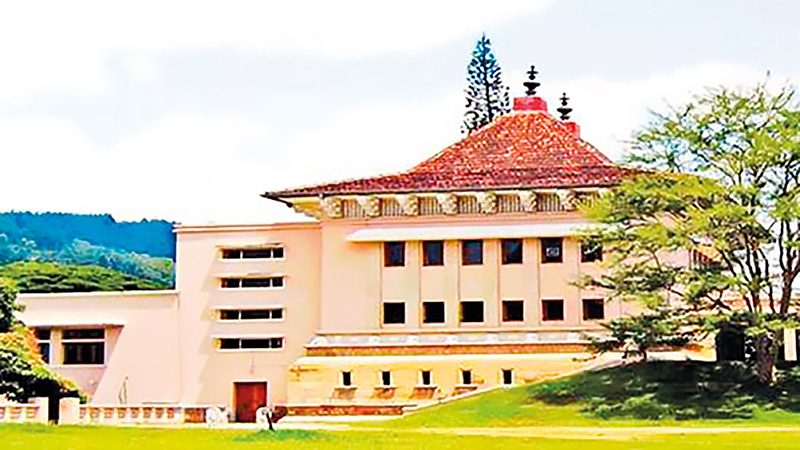
A recent discussion by former Environment Minister, Eng. Patali Champika Ranawaka on the Derana 360 programme has reignited an important national conversation on how Sri Lanka plans, builds and rebuilds in the face of recurring disasters.
His observations, delivered with characteristic clarity and logic, went beyond the immediate causes of recent calamities and focused sharply on long-term solutions—particularly the urgent need for smarter land use and vertical housing development.
Ranawaka’s proposal to introduce multistoried housing schemes in the Gannoruwa area, as a way of reducing pressure on environmentally sensitive and disaster-prone zones, resonated strongly with urban planners and environmentalists alike.
It also echoed ideas that have been quietly discussed within academic and conservation circles for years but rarely translated into policy.
One such voice is that of Professor Siril Wijesundara, Research Professor at the National Institute of Fundamental Studies (NIFS) and former Director General of the Royal Botanic Gardens, Peradeniya, who believes that disasters are often “less acts of nature and more outcomes of poor planning.”
“What we repeatedly see in Sri Lanka is not merely natural disasters, but planning failures,” Professor Wijesundara told The Island.
“Floods, landslides and environmental degradation are intensified because we continue to build horizontally, encroaching on wetlands, forest margins and river reservations, instead of thinking vertically and strategically.”
The former Director General notes that the University of Peradeniya itself offers a compelling case study of both the problem and the solution. The main campus, already densely built and ecologically sensitive, continues to absorb new faculties, hostels and administrative buildings, placing immense pressure on green spaces and drainage systems.
“The Peradeniya campus was designed with landscape harmony in mind,” he said. “But over time, ad-hoc construction has compromised that vision. If development continues in the same manner, the campus will lose not only its aesthetic value but also its ecological resilience.”
Professor Wijesundara supports the idea of reorganising the Rajawatte area—located away from the congested core of the university—as a future development zone. Rather than expanding inward and fragmenting remaining open spaces, he argues that Rajawatte can be planned as a well-designed extension, integrating academic, residential and service infrastructure in a controlled manner.
Crucially, he stresses that such reorganisation must go hand in hand with social responsibility, particularly towards minor staff currently living in the Rajawatte area.
“These workers are the backbone of the university. Any development plan must ensure their dignity and wellbeing,” he said. “Providing them with modern, safe and affordable multistoried housing—especially near the railway line close to the old USO premises—would be both humane and practical.”
According to Professor Wijesundara, housing complexes built near existing transport corridors would reduce daily commuting stress, minimise traffic within the campus, and free up valuable land for planned academic use.
More importantly, vertical housing would significantly reduce the university’s physical footprint.
Drawing parallels with Ranawaka’s Gannoruwa proposal, he emphasised that vertical development is no longer optional for Sri Lanka.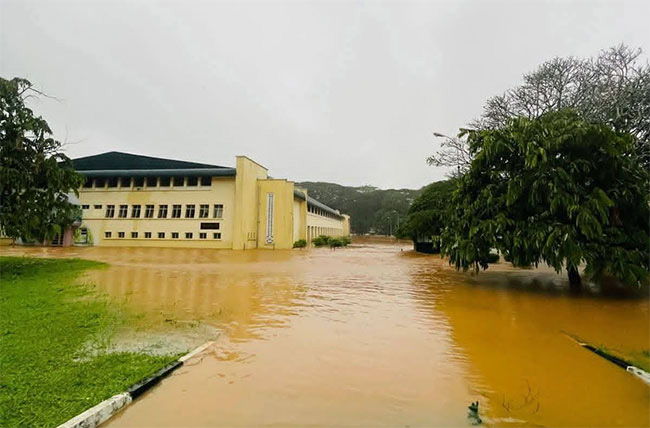
“We are a small island with a growing population and shrinking safe land,” he warned.
“If we continue to spread out instead of building up, disasters will become more frequent and more deadly. Vertical housing, when done properly, is environmentally sound, economically efficient and socially just.”
The veteran botanist also highlighted the often-ignored link between disaster vulnerability and the destruction of green buffers.
“Every time we clear a lowland, a wetland or a forest patch for construction, we remove nature’s shock absorbers,” he said.
“The Royal Botanic Gardens has survived floods for over a century precisely because surrounding landscapes once absorbed excess water. Urban planning must learn from such ecological wisdom.”
Professor Wijesundara believes that universities, as centres of knowledge, should lead by example.
“If an institution like Peradeniya cannot demonstrate sustainable planning, how can we expect cities to do so?” he asked. “This is an opportunity to show that development and conservation are not enemies, but partners.”
As climate-induced disasters intensify across the country, voices like his—and proposals such as those articulated by Patali Champika Ranawaka—underscore a simple but urgent truth: Sri Lanka’s future safety depends not only on disaster response, but on how and where we build today.
The challenge now lies with policymakers and planners to move beyond television studio discussions and academic warnings, and translate these ideas into concrete, people-centred action.
By Ifham Nizam ✍️
Features
Superstition – Major barrier to learning and social advancement

At the initial stage of my six-year involvement in uplifting society through skill-based initiatives, particularly by promoting handicraft work and teaching students to think creatively and independently, my efforts were partially jeopardized by deep-rooted superstition and resistance to rational learning.
Superstitions exerted a deeply adverse impact by encouraging unquestioned belief, fear, and blind conformity instead of reasoning and evidence-based understanding. In society, superstition often sustains harmful practices, social discrimination, exploitation by self-styled godmen, and resistance to scientific or social reforms, thereby weakening rational decision-making and slowing progress. When such beliefs penetrate the educational environment, students gradually lose the habit of asking “why” and “how,” accepting explanations based on fate, omens, or divine intervention rather than observation and logic.
Initially, learners became hesitant to challenge me despite my wrong interpretation of any law, less capable of evaluating information critically, and more vulnerable to misinformation and pseudoscience. As a result, genuine efforts towards social upliftment were obstructed, and the transformative power of education, which could empower individuals economically and intellectually, was weakened by fear-driven beliefs that stood in direct opposition to progress and rational thought. In many communities, illnesses are still attributed to evil spirits or curses rather than treated as medical conditions. I have witnessed educated people postponing important decisions, marriages, journeys, even hospital admissions, because an astrologer predicted an “inauspicious” time, showing how fear governs rational minds.
While teaching students science and mathematics, I have clearly observed how superstition acts as a hidden barrier to learning, critical thinking, and intellectual confidence. Many students come to the classroom already conditioned to believe that success or failure depends on luck, planetary positions, or divine favour rather than effort, practice, and understanding, which directly contradicts the scientific spirit. I have seen students hesitate to perform experiments or solve numerical problems on certain “inauspicious” days.
In mathematics, some students label themselves as “weak by birth”, which creates fear and anxiety even before attempting a problem, turning a subject of logic into a source of emotional stress. In science classes, explanations based on natural laws sometimes clash with supernatural beliefs, and students struggle to accept evidence because it challenges what they were taught at home or in society. This conflict confuses young minds and prevents them from fully trusting experimentation, data, and proof.
Worse still, superstition nurtures dependency; students wait for miracles instead of practising problem-solving, revision, and conceptual clarity. Over time, this mindset damages curiosity, reduces confidence, and limits innovation, making science and mathematics appear difficult, frightening, or irrelevant. Many science teachers themselves do not sufficiently emphasise the need to question or ignore such irrational beliefs and often remain limited to textbook facts and exam-oriented learning, leaving little space to challenge superstition directly. When teachers avoid discussing superstition, they unintentionally reinforce the idea that scientific reasoning and superstitious beliefs can coexist.
To overcome superstition and effectively impose critical thinking among students, I have inculcated the process to create a classroom culture where questioning was encouraged and fear of being “wrong” was removed. Students were taught how to think, not what to think, by consistently using the scientific method—observation, hypothesis, experimentation, evidence, and conclusion—in both science and mathematics lessons. I have deliberately challenged superstitious beliefs through simple demonstrations and hands-on experiments that allow students to see cause-and-effect relationships for themselves, helping them replace belief with proof.
Many so-called “tantrik shows” that appear supernatural can be clearly explained and exposed through basic scientific principles, making them powerful tools to fight superstition among students. For example, acts where a tantrik places a hand or tongue briefly in fire without injury rely on short contact time, moisture on the skin, or low heat transfer from alcohol-based flames rather than divine power.
“Miracles” like ash or oil repeatedly appearing from hands or idols involve concealment or simple physical and chemical tricks. When these tricks are demonstrated openly in classrooms or science programmes and followed by clear scientific explanations, students quickly realise how easily perception can be deceived and why evidence, experimentation, and critical questioning are far more reliable than blind belief.
Linking concepts to daily life, such as explaining probability to counter ideas of luck, or biology to explain illness instead of supernatural causes, makes rational explanations relatable and convincing.
Another unique example that I faced in my life is presented here. About 10 years ago, when I entered my new house but did not organise traditional rituals that many consider essential for peace and prosperity as my relatives believed that without them prosperity would be blocked. Later on, I could not utilise the entire space of my newly purchased house for earning money, largely because I chose not to perform certain rituals.
While this decision may have limited my financial gains to some extent, I do not consider it a failure in the true sense. I feel deeply satisfied that my son and daughter have received proper education and are now well settled in their employment, which, to me, is a far greater achievement than any ritual-driven expectation of wealth. My belief has always been that a house should not merely be a source of income or superstition-bound anxiety, but a space with social purpose.
Instead of rituals, I strongly feel that the unused portion of my house should be devoted to running tutorials for poor and underprivileged students, where knowledge, critical thinking, and self-reliance can be nurtured. This conviction gives me inner peace and reinforces my faith that education and service to society are more meaningful measures of success than material profit alone.
Though I have succeeded to some extent, this success has not been complete due to the persistent influence of superstition.
by Dr Debapriya Mukherjee
Former Senior Scientist
Central Pollution Control Board, India ✍️
Features
Race hate and the need to re-visit the ‘Clash of Civilizations’

 Australian Prime Minister Anthony Albanese has done very well to speak-up against and outlaw race hate in the immediate aftermath of the recent cold-blooded gunning down of several civilians on Australia’s Bondi Beach. The perpetrators of the violence are believed to be ardent practitioners of religious and race hate and it is commendable that the Australian authorities have lost no time in clearly and unambiguously stating their opposition to the dastardly crimes in question.
Australian Prime Minister Anthony Albanese has done very well to speak-up against and outlaw race hate in the immediate aftermath of the recent cold-blooded gunning down of several civilians on Australia’s Bondi Beach. The perpetrators of the violence are believed to be ardent practitioners of religious and race hate and it is commendable that the Australian authorities have lost no time in clearly and unambiguously stating their opposition to the dastardly crimes in question.
The Australian Prime Minister is on record as stating in this connection: ‘ New laws will target those who spread hate, division and radicalization. The Home Affairs Minister will also be given new powers to cancel or refuse visas for those who spread hate and a new taskforce will be set up to ensure the education system prevents, tackles and properly responds to antisemitism.’
It is this promptness and single-mindedness to defeat race hate and other forms of identity-based animosities that are expected of democratic governments in particular world wide. For example, is Sri Lanka’s NPP government willing to follow the Australian example? To put the record straight, no past governments of Sri Lanka initiated concrete measures to stamp out the evil of race hate as well but the present Sri Lankan government which has pledged to end ethnic animosities needs to think and act vastly differently. Democratic and progressive opinion in Sri Lanka is waiting expectantly for the NPP government’ s positive response; ideally based on the Australian precedent to end race hate.
Meanwhile, it is apt to remember that inasmuch as those forces of terrorism that target white communities world wide need to be put down their counterpart forces among extremist whites need to be defeated as well. There could be no double standards on this divisive question of quashing race and religious hate, among democratic governments.
The question is invariably bound up with the matter of expeditiously and swiftly advancing democratic development in divided societies. To the extent to which a body politic is genuinely democratized, to the same degree would identity based animosities be effectively managed and even resolved once and for all. To the extent to which a society is deprived of democratic governance, correctly understood, to the same extent would it experience unmanageable identity-bred violence.
This has been Sri Lanka’s situation and generally it could be stated that it is to the degree to which Sri Lankan citizens are genuinely constitutionally empowered that the issue of race hate in their midst would prove manageable. Accordingly, democratic development is the pressing need.
While the dramatic blood-letting on Bondi Beach ought to have driven home to observers and commentators of world politics that the international community is yet to make any concrete progress in the direction of laying the basis for an end to identity-based extremism, the event should also impress on all concerned quarters that continued failure to address the matters at hand could prove fatal. The fact of the matter is that identity-based extremism is very much alive and well and that it could strike devastatingly at a time and place of its choosing.
It is yet premature for the commentator to agree with US political scientist Samuel P. Huntingdon that a ‘Clash of Civilizations’ is upon the world but events such as the Bondi Beach terror and the continuing abduction of scores of school girls by IS-related outfits, for instance, in Northern Africa are concrete evidence of the continuing pervasive presence of identity-based extremism in the global South.
As a matter of great interest it needs mentioning that the crumbling of the Cold War in the West in the early nineties of the last century and the explosive emergence of identity-based violence world wide around that time essentially impelled Huntingdon to propound the hypothesis that the world was seeing the emergence of a ‘Clash of Civilizations’. Basically, the latter phrase implied that the Cold War was replaced by a West versus militant religious fundamentalism division or polarity world wide. Instead of the USSR and its satellites, the West, led by the US, had to now do battle with religion and race-based militant extremism, particularly ‘Islamic fundamentalist violence’ .
Things, of course, came to a head in this regard when the 9/11 calamity centred in New York occurred. The event seemed to be startling proof that the world was indeed faced with a ‘Clash of Civilizations’ that was not easily resolvable. It was a case of ‘Islamic militant fundamentalism’ facing the great bulwark, so to speak, of ‘ Western Civilization’ epitomized by the US and leaving it almost helpless.
However, it was too early to write off the US’ capability to respond, although it did not do so by the best means. Instead, it replied with military interventions, for example, in Iraq and Afghanistan, which moves have only earned for the religious fundamentalists more and more recruits.
Yet, it is too early to speak in terms of a ‘Clash of Civilizations’. Such a phenomenon could be spoken of if only the entirety of the Islamic world took up arms against the West. Clearly, this is not so because the majority of the adherents of Islam are peaceably inclined and want to coexist harmoniously with the rest of the world.
However, it is not too late for the US to stop religious fundamentalism in its tracks. It, for instance, could implement concrete measures to end the blood-letting in the Middle East. Of the first importance is to end the suffering of the Palestinians by keeping a tight leash on the Israeli Right and by making good its boast of rebuilding the Gaza swiftly.
Besides, the US needs to make it a priority aim to foster democratic development worldwide in collaboration with the rest of the West. Military expenditure and the arms race should be considered of secondary importance and the process of distributing development assistance in the South brought to the forefront of its global development agenda, if there is one.
If the fire-breathing religious demagogue’s influence is to be blunted worldwide, then, it is development, understood to mean equitable growth, that needs to be fostered and consolidated by the democratic world. In other words, the priority ought to be the empowerment of individuals and communities. Nothing short of the latter measures would help in ushering a more peaceful world.
-

 News4 days ago
News4 days agoMembers of Lankan Community in Washington D.C. donates to ‘Rebuilding Sri Lanka’ Flood Relief Fund
-

 Latest News7 days ago
Latest News7 days agoLandslide early warnings issued to the districts of Badulla, Kandy, Kurunegala, Matale and Nuwara-Eliya extended till 8AM on Sunday (21)
-

 News2 days ago
News2 days agoBritish MP calls on Foreign Secretary to expand sanction package against ‘Sri Lankan war criminals’
-

 Business6 days ago
Business6 days agoBrowns Investments sells luxury Maldivian resort for USD 57.5 mn.
-

 News5 days ago
News5 days agoAir quality deteriorating in Sri Lanka
-

 Editorial7 days ago
Editorial7 days agoCops as whipping boys?
-
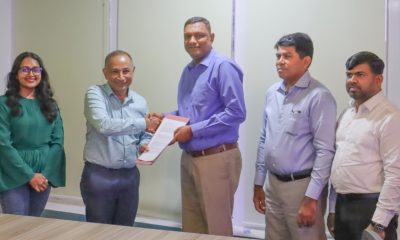
 Features6 days ago
Features6 days agoHatton Plantations and WNPS PLANT Launch 24 km Riparian Forest Corridor
-

 News5 days ago
News5 days agoCardinal urges govt. not to weaken key socio-cultural institutions

